Critters in our bays
Some of the organisms found living in our bays are:
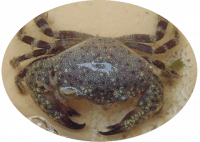
Florida Stone Crab
Florida stone crabs prefer the bottoms of bays, grass flats, oyster reefs, and rock jetties where they can burrow or find refuge from predators. Juveniles do not usually dig burrows, but instead hide among rocks or in seagrass beds. It is dark brownish-red with gray interspersed. The claws are hinged, very dark, and banded with red and yellow. Adult Florida stone crabs make burrows in mud or sand below the low tide line, lying in wait for prey.
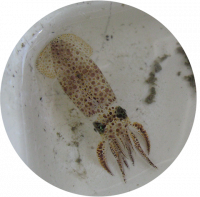
Grass Squid
Found in shallow seagrass beds and patch reefs in estuaries and bays. These are tiny squid and range in size from ½ inch – 1 inch in length. They have 2 rows of suckers on their arms. Large pigmented chromatophores are often visible and allow them to change colors to become dark or translucent to match their surroundings. They can feed on zooplankton, small crustaceans and fish and have been found in both Moorings Bay and Naples Bay.
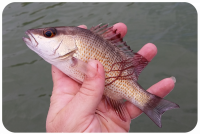
Mangrove Snapper
Also referred to as Gray Snapper, the mangrove snapper is typically greyish red, but it can change color from bright red to copper red. It has a dark stripe running through its eye if observed from the top when it is underwater. Its size ranges from 2–6 pounds. It can be found in many areas from canals to grass flats, as well as in open water. Most mangrove snapper in the open water are generally found near bottom structure or reefs. It spawns June through August and feeds on crustaceans and small fish.
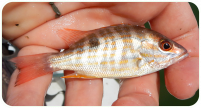
Lane Snapper
Juveniles are found inshore over grass beds or shallow reefs. Adults are found offshore off wrecks and on reefs. The lane snapper is abundant in South Florida, extending down into the Caribbean and East into the Bahamas. The Florida record is 6 lb 6 oz (2.9 kg). Most fish tend to fall in the range of 8 to 12 in long. Specimens above 14 in are uncommon.
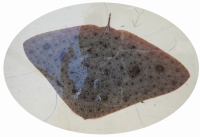 Smooth Butterfly Ray
Smooth Butterfly Ray
Its natural habitats are shallow seas, subtidal aquatic beds, estuarine, and coastal saline lagoons. Its common name is derived from its compressed body, pectoral fins that are wider than their length, and overall diamond shape. The dorsal spine on the tail is absent; therefore, no stinging can occur to harm humans. They feed on small fish, crustaceans, and shellfish. The upper jaw consists of 6 to 120 teeth and the lower jaw has 52 to 106 teeth; each jaw contains 6 to 8 simultaneously functioning rows. Females can reach 50 cm and males about 42 cm in size.
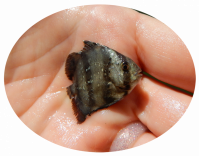
Juvenile Atlantic Spadefish
This fish grows up in coastal estuaries and moves offshore as adults to both natural and artificial reefs. As adults, they are silver in color with irregular black vertical bars. Maximum length is about 36 inches. They are strong fighters making them a popular gamefish. They often swim in large schools and feed on crustaceans, small encrusting invertebrates, and the tentacles of jellyfish.
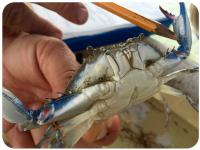
Blue Crab
The scientific name of these feisty crabs, Callinectes sapidus, means “savory beautiful swimmer” and they are found throughout the Gulf of Mexico and estuaries. They are omnivores, eating both plants and animals that it finds on the sea floor as well as being detritivores, meaning they scavenge whatever dead tissue they come across. They can be harvested both recreationally and commercially and are regulated by the Florida Fish and Wildlife Conservation Commission.
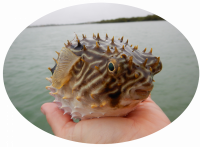
Striped Burrfish
This fish is a member of the porcupinefish family and is covered in immovable spines. It can inflate its body by taking either air or water into a ventral extension of the stomach. They have a strong bite and can crush the shells of mollusks such as oysters, barnacles, mussels, small crabs, and hermit crabs. Adults tend to stay within 30 feet or so of the surface, but have been found at depths of up to 300 feet.
